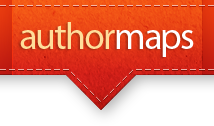Impact of Self-Publishers on Big Publishers
Have you read my free PDF, “Global Publishing, Inc. — What Does It Mean for You?” If so, you’re aware of the radical changes that have taken place in the publishing industry during the first fifteen years of the 21st century.
But there are other influences on the publishing industry too. One of them is the amazing explosion of self-published print and digital books.
POD influence on publishers
When the POD industry arose, it made it possible to avoid the high costs of storing unsold print books. Authors aren’t the only ones taking advantage of this new benefit. New small publishers are using POD printing services as well. So are traditional publishers and academic book publishers.
POD could be one of the factors keeping the digital book revolution from rendering print books obsolete. A couple of years ago ebooks seemed destined to take over the book market. However, in late 2014 an article appeared on Huffington Post with this shocking title, “Print books Outsold Ebooks in First Half of 2014“.
That post was based on an article from Publisher’s Weekly. PW reported that a Nielsen Books & Consumer survey indicated both hardcover and paperback books outsold ebooks during the first half of this year. Ebooks comprised only 23% of the book market. Hardcover books beat that by 2 percentage points, and paperbacks sold at nearly twice the rate of ebooks, i.e., 42%.
Huffington Post’s article quotes industry experts and authors such as Stephen King on expectations that “print books have a long and bright future ahead of them.” It concludes, “If the new trends continue, such warnings of the death of print books, and their potential benefits, may prove to have been greatly exaggerated.”
The new royalty statements
In My Story on Authormaps I wrote about my frustration with the way my second book’s publisher (now defunct) paid royalties:
Envelopes from my publisher dribbled in every once in awhile. I never knew when they would arrive. I never found out how much my publisher deducted for expenses for my book either. After a year I’d barely earned more than [the $300] I made on my first book!
Elsewhere I’ve written:
Royalties to authors may not be paid until a year after the book is published and the publisher deducts all costs. Royalties are not always itemized or ever reported in total on royalty “statements.”
This is becoming a thing of the past. Not only are authors getting paid royalties sooner, they are also getting far more information on their royalty statements. In fact, royalty statements are no longer just a piece of paper—they are whole digital “dashboards”—like those you’d use on a WordPress blog site.
What happened? Now that the publishing industry is dominated by an oligopoly of huge media companies, these business moguls have replaced the old American publishing industry’s gentleman’s-club way of handshaking and closed lips. Publishing is big business now, very competitive and much more transparent.
Current royalties and rights are viewed by these powerhouse media companies as a way to recruit the particular authors they want – the 10 percent who will bring them a profit. Extensive marketing and promotion statistics are now part of their reports to authors.
Royalty dashboards also promote their creators by sharing news of publishers’ activities on behalf of their clients, e.g., rights they’ve sold for the author, data on foreign language sales, etc.
Of course, there’s one thing the new media versions of established publisher imprints have in common with the old ones. Big publishers are currently divided about paying out quickly – many like keeping authors “reserves” on hand, to be paid later. However, competition is making it harder for publishers to do this for long periods of time.
In addition, there is another similarity. Authors may get aggregate statistics now on where sales were made, e.g., at a particular store on their book tour, but they will not receive individual customer information. This is nothing new either. Publishers have usually not shared this information with authors.
This is true for ebook sales too. The multinational American corporations that dominate ebook distribution, Amazon, Apple, and Barnes & Noble also are not in the habit of sharing marketing information that they might use for their own marketing purposes.
The sharing of individual customer data and contact information is a no-brainer when authors are actively promoting their own books. It could enable authors to make more book sales. However, customer information appears to be a proprietary commodity that the publishing industry holds close to its vest – even when it hurts their own financial self-interests.
Speedy one-stop service
Big publishers’ royalty statements now include all formats of an author’s book(s). Statements are online in the form of a dashboard for the author to view. Additional information includes the publisher’s online marketing activity summaries, details of rights sales, and listing of reserves being held for the author. And best of all, royalty data is updated every three or six months.
This, along with draconian author contracts, is how the imprints of conglomerate multi-national media publishers are attempting to hold onto best-selling authors like J.K. Rowling who just might choose to self-publish, or go with a smaller independent or academic press, or heaven forbid—a conglomerate competitor.
For your copy of my three-part free report, “Global Publishing Inc. — What Does It Mean for You?” please click here.






